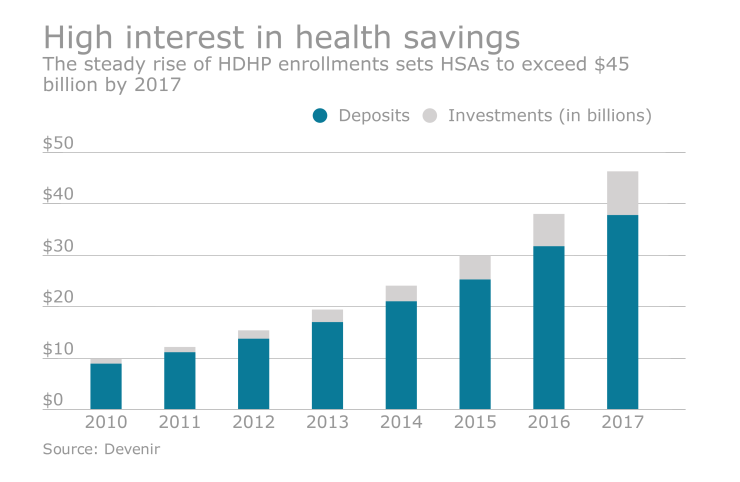Ninety-percent of large employers will offer at least one consumer-directed health plan in 2018, and nearly 40% will offer a CDHP as the only plan option, according to the National Business Group on Health. The most common CDHP design is a high-deductible health plan paired with a health savings account. This design is offered by 80% of employers that use CDHPs.
Because of the complexity of benefit accounts such as HSAs, FSAs and HRAs, it’s a tall order for brokers to pinpoint which ones to advise employers to use, and explain the pros and cons of each. Even more complex a task: explaining to employers how they can play well together to formulate the best healthcare plan for each organization.
Employers will be relying on brokers to know the ins and outs of each benefit account as they take a larger role in their employees’ health benefit plans.

FSAs are owned by the employee and are not portable from one employer to the next, but are eligible for COBRA. Financial contributions can be made by both the employee and the employer, and up to $500 can roll over each year. The full annual goal amount is made available on the first day of the plan year. Spend it on qualified medical care expenses such as contacts, co-pays, crutches. Additionally, dependent care FSAs can also be used to cover things such as childcare and elder care.
Also see: “
HRAs are owned by the employer. Both financial contributions are made by the employer, and the rollover and maximum contributions are determined by the employer. Spend it on medical care expenses and insurance premiums.
Bundling
The easiest and most common way employers bundle these accounts is to provide an HSA with a compatible FSA (sometimes called Limited Purpose FSA). The Limited Purpose FSA can be used for Dental and Vision expenses only until the employee has incurred the federally mandated amount of medical and prescription drug deductible expenses.
This year, an FSA can be funded with an additional $2,650. Including HSA funding, that is up to $9,500 in tax-free deferrals. Using the FSA funds for dental and vision expenses allows the employee to protect their HSA balance for potential additional future expenses. It is important to partner with a TPA that can manage both accounts together to provide a seamless experience for the employee.
While there’s still a lot we don’t know about what’s to come for the U.S. healthcare landscape, having a good grasp on the alphabet soup that is benefit accounts will ensure clients feel confident preparing their workforce for whatever lies ahead.





